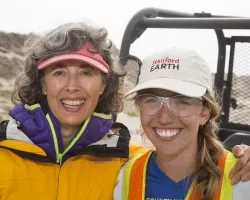Easy and open public access to domestic satellite-based crop vegetation condition and soil moisture data is now available thanks to a new website application released by the U.S. Department of Agriculture’s (USDA) National Agricultural Statistics Service (NASS).
Tracking soil moisture from a distance can help farmers see where their fields need water and where they can conserve the vital resource. But the tool, called Crop Condition and Soil Moisture Analytics (Crop-CASMA), can also help them understand the impact of extreme weather events like flooding and drought and make decisions on when to plant certain crops based on current conditions.
Rajat Bindlish is a research associate in Earth science remote sensing at NASA’s Goddard Space Flight Center in Greenbelt, Md. He and his team developed this geospatial information application. He says that in addition to crop predictions, the tool will allow for insurance agencies to better develop economic estimates. His work is funded through NASA’s Western Water Applications Office within the NASA Earth Applied Sciences’ Water Resources program area.
Crop-CASMA incorporates data from NASA’s Soil Moisture Active Passive (SMAP) mission, land surface temperature data from the Moderate Resolution Imaging Spectroradiometer (MODIS) instrument aboard NASA's Aqua satellite and plant health data from the normalized difference vegetation index (NDVI) developed using MODIS data from NASA's Terra satellite. The goal of Crop-CASMA is so everyone from farmers to land managers can visualize and assess crop and soil moisture conditions – without even visiting the fields.
To learn more about how NASA Earth observations are used in the Crop-CASMA tool, read the feature on NASA.gov, NASA Data Powers New USDA Soil Moisture Portal.
Editor note: Additional satellite instrument details added on 3/19/2021.



